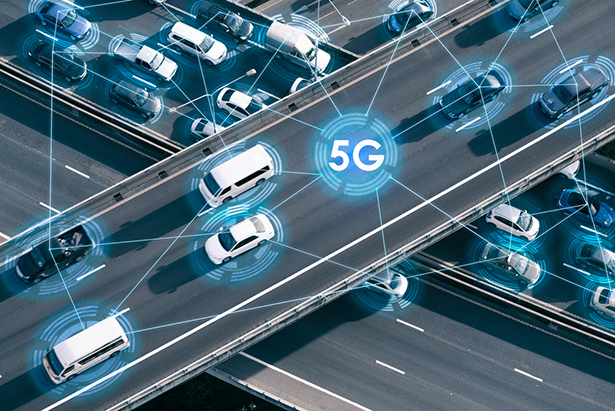How 5G Enhances Autonomous Vehicle Connectivity for Safer Roads
The emergence of 5G technology is redefining entire industries, with the automotive sector being one of the key beneficiaries. Autonomous vehicles (AVs), which depend on real-time data exchange and reliable connectivity to function effectively, are set to harness major advantages from 5G integration.
From improving decision-making to enabling safer roads, the role of 5G in enhancing autonomous vehicle performance is transformative.
This article explores the ways in which 5G is advancing AV connectivity, focusing on its impact on data exchange, road safety, and the challenges associated with its implementation.
The Link Between 5G and Autonomous Vehicle Connectivity
5G, or the fifth generation of wireless networks, offers groundbreaking features such as unparalleled data speeds, ultra-low latency, and massive device connectivity.
These attributes hold immense significance for AV systems, which require seamless communication between vehicles, infrastructures, and cloud networks to operate efficiently and safely.
With 5G, AVs can leverage real-time data processing to make instant decisions, an essential aspect of autonomous driving. For example, AVs must quickly interpret sensor data, identify hazards, and adjust navigation plans.
These objectives are only achievable with the kind of advanced connectivity that 5G provides, cementing its role as a cornerstone for the future of self-driving cars.
Current Market Trends in Autonomous Technologies
The autonomous vehicle market has been experiencing rapid growth, spurred by advancements in artificial intelligence (AI), machine learning, and sensor technologies.
However, optimizing the capabilities of AVs requires more than just hardware; robust communication networks like 5G are essential enablers.
Recognizing this, automakers and tech companies are increasingly collaborating to deploy 5G-enabled AVs. Both industries aim to deliver vehicles that offer enhanced safety, efficiency, and an improved user experience.
Understanding 5G Technology
5G networks are designed to deliver faster data transfer rates, lower latency, and higher system reliability compared to previous wireless generations like 3G and 4G.
These networks are particularly suited for AV applications due to features like:
- Ultra-Low Latency: 5G enables nearly instantaneous data transfer, which is critical for AVs making split-second driving decisions based on real-time road and traffic conditions.
- Enhanced Bandwidth: The increased bandwidth supports the high-speed exchange of large volumes of data sourced from the advanced sensors integrated into AV systems.
- Massive Connectivity: The ability to connect numerous devices simultaneously allows AVs to communicate efficiently with nearby vehicles (V2V), traffic signals, infrastructures (V2I), or even pedestrians (V2X).
These features distinguish 5G from prior wireless networks, which were not equipped to handle the intensive data workloads and processing needs of AV systems.
How 5G Benefits Autonomous Vehicles
Enhanced Data Speed and Reliability
5G dramatically improves the speed and reliability of data exchange, enabling AVs to function more effectively. This connectivity facilitates:- Real-Time Decision Making: AVs equipped with 5G connectivity can process complex environments and respond to changes instantaneously, leading to safer navigation and effective obstacle avoidance.
- Vehicle-to-Everything (V2X) Communication: Seamless communication between AVs and their surroundings improves situational awareness, enabling better collaboration between vehicles, infrastructures, and pedestrians.
- Edge Computing Integration: With edge computing supported by 5G, data processing occurs closer to the source, lowering latency and enhancing AV responsiveness in dynamic driving environments.
Improved Road Safety
Safety remains the top priority for autonomous vehicles, and 5G plays a key role in achieving safer roads by enabling:- Collision Avoidance: Real-time communication allows AVs to react to hazards, such as pedestrians or sudden braking vehicles, reducing the likelihood of accidents.
- Traffic Management: Integration with 5G networks helps AVs avoid bottlenecks, road closures, and accidents, which improves traffic efficiency and reduces congestion.
- Driver Assistance Features: Advanced Driver-Assistance Systems (ADAS), such as automatic emergency braking and adaptive cruise control, function even more precisely with 5G’s fast and reliable connectivity.
Implementation Challenges
While 5G opens new doors for autonomous vehicles, integrating this technology on a large scale is not without hurdles. Major challenges include:
Infrastructure Development
Deploying 5G networks across cities and highways requires significant investment in telecom infrastructure, such as fiber-optic cables and network towers. Ensuring adequate coverage for AVs to operate seamlessly is a costly and resource-intensive process.Regulatory Compliance
Governments need to establish regulations covering 5G-enabled AVs, addressing complex areas like data privacy, cybersecurity, liability, and safety standards. Clear regulatory frameworks are essential to facilitate 5G’s widescale deployment in the AV ecosystem.Costs and Scalability
Financial barriers remain significant. Building and maintaining 5G networks involves a massive expenditure—estimated between $130 to $150 billion—which exceeds the capabilities of traditional wireless carriers. Additionally, the scalability of these networks must ensure they can support increasing numbers of AVs as adoption grows.Future Implications
Transforming the Automotive Industry
The integration of 5G technologies is likely to spark major shifts in the automotive industry. New business models, such as shared autonomous fleets and subscription-based mobility services, could replace traditional ownership.Collaboration between automakers, tech firms, and telecom providers will become essential to push AV innovation forward.
Smart City Ecosystems
5G-enabled AVs also play an integral role in the development of smart cities. These vehicles will drive intelligent transportation systems that optimize traffic flow, reduce congestion, and enhance safety.Beyond transportation, AVs connected to 5G networks may support broader urban goals, such as improving sustainability and reducing carbon emissions.
Conclusion
The advent of 5G technology marks a critical milestone for the autonomous vehicle industry. Its capabilities—such as ultra-low latency, high-speed data transfer, and advanced connectivity—ensure AVs can process real-time data, enhance road safety, and collaborate with their surroundings more effectively.
However, achieving these benefits requires overcoming barriers like infrastructure investments and regulatory challenges.
As 5G technology continues to expand, it is poised to unlock the full potential of autonomous vehicles while shaping the future of transportation and smart cities. By combining cutting-edge telecom solutions with AV innovation, society moves closer to realizing safer, more efficient roads.



Post a Comment